After months of messing with my 3018, I am upgrading to a shapeoko pro. Having owned a shapeoko 2 many years ago, and gained a new appreciation for the power of modern CAM software available to the hobbiest, I was ready to jump in deep. A recent engineering award at work sealed the deal by adding a monetary boost. The 3018 was fun, but kind of a toy. I struggled to get my projects to fit on it, and it was barely able to slog through the oak handles on my material cabinet.
The new tool is a big beefy bad boy! So big in fact, I had to use a toddler for scale. He is 32″ tall, and this thing can cut a 33″ square. Everything about it is designed very stiff compared to any of my previous mills, and I think to get something better would require a custom build or doubling the price tag.
A big CNC router requires a big table. I moved a lot of shop things around in my head until I decided I could actually fit this beast. My woodworking bench had to scooch over a smidge, but there was room, and it keeps the mill in close proximity to my computer stand.
I was thinking torsion box originally, but only put a top on it. I started by running some 2x4s through the planer to get them flatter and squarer and all at an even set of dimensions. The top is 3/4″ plywood with the legs two 2x4s at right angles. I put it on casters because everything in the shop is required to be on casters. I threw a level across the top of the table and it was quite flat until you got to the edges of the plywood. That should hopefully be a good enough base for the mill. The bottom has storage area for all my plastics and metals with room to spare. I’ll probably put together some drawers once I live with the table for a bit and see where I naturally sit/stand.
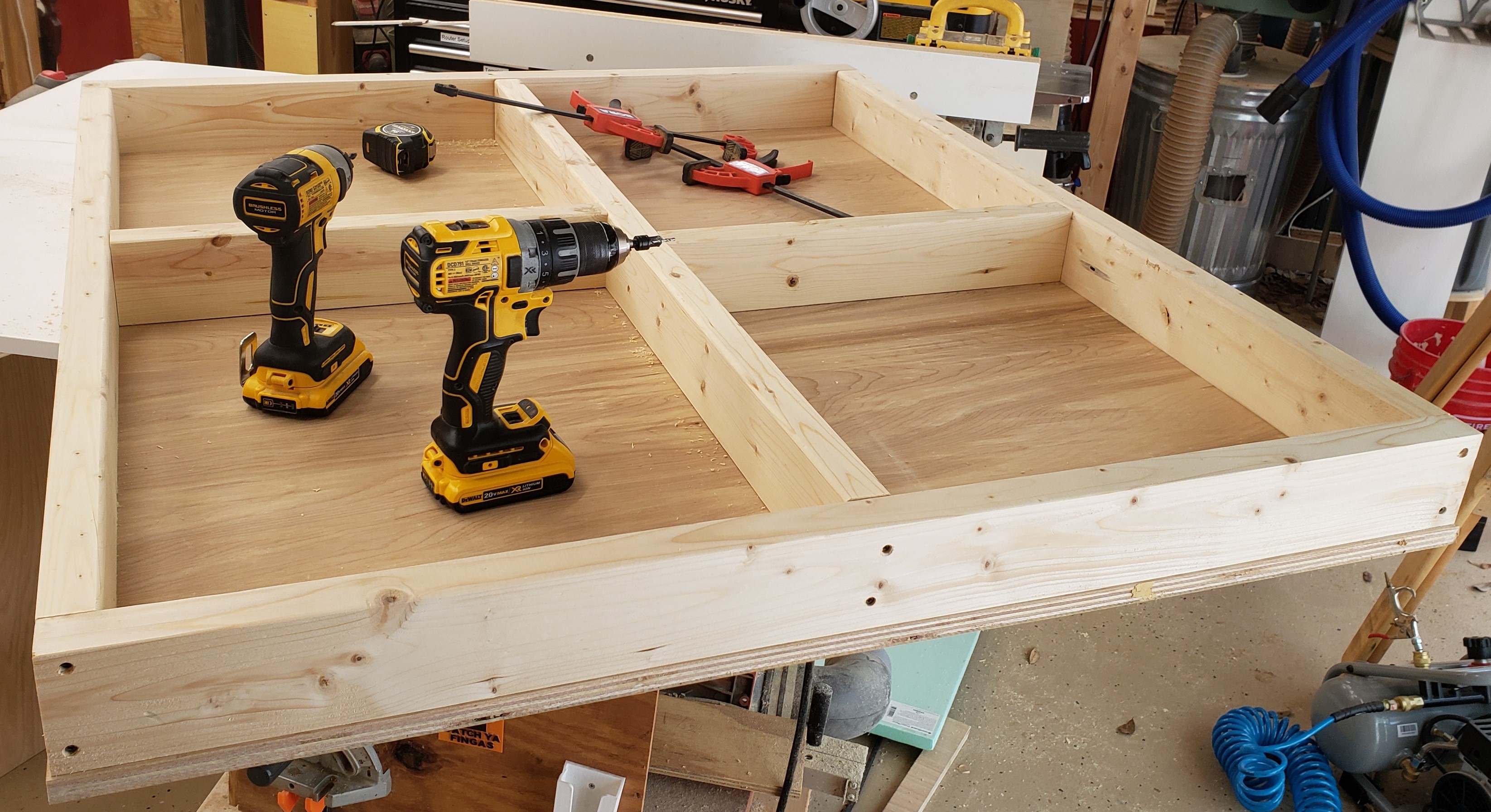


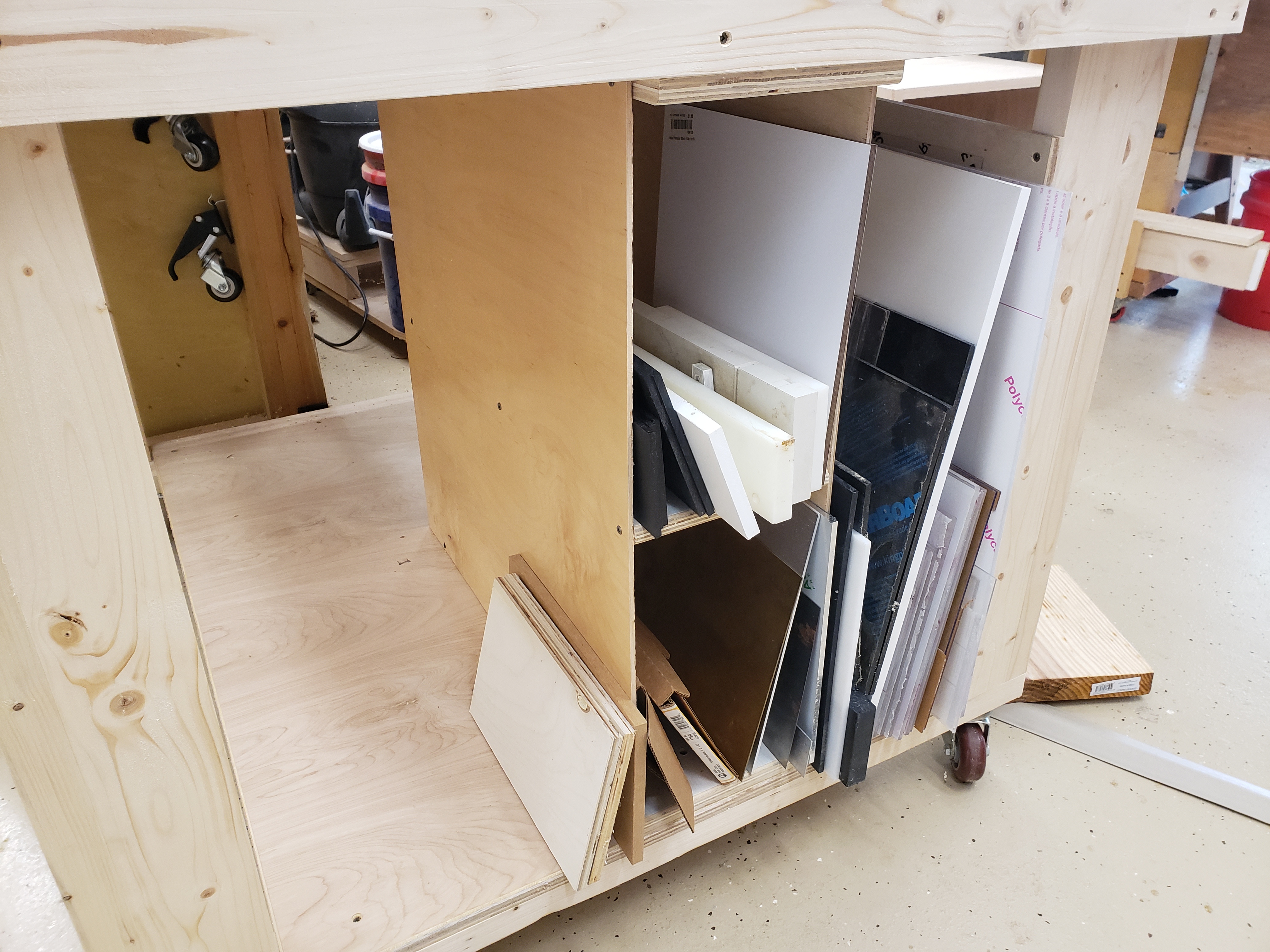
The build was delightful. Good instructions, simple assembly, high quality parts, and only took a few hours. This thing is over 150 pounds of metal! My only hitch was that they sent me the wrong spindle and some headers on the controller board were installed upside down. They eventually made that all right via tech support.

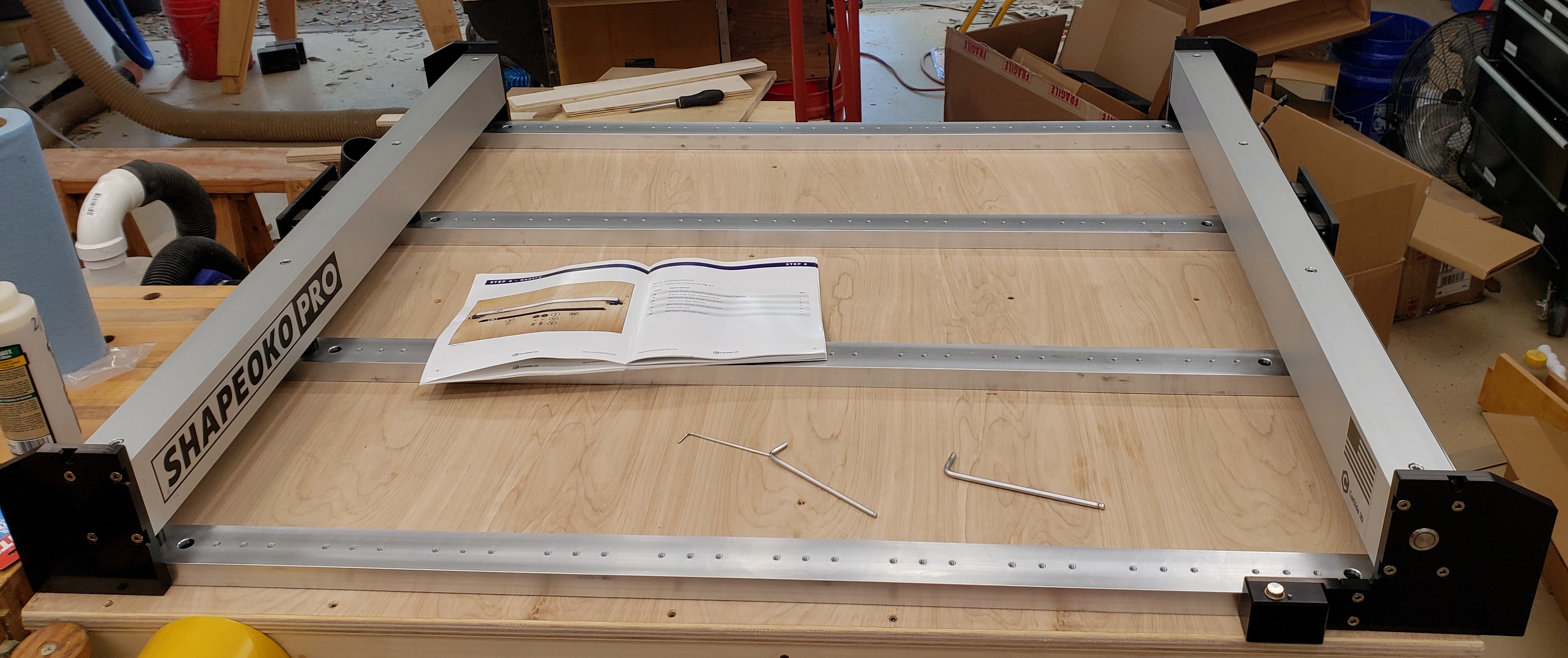
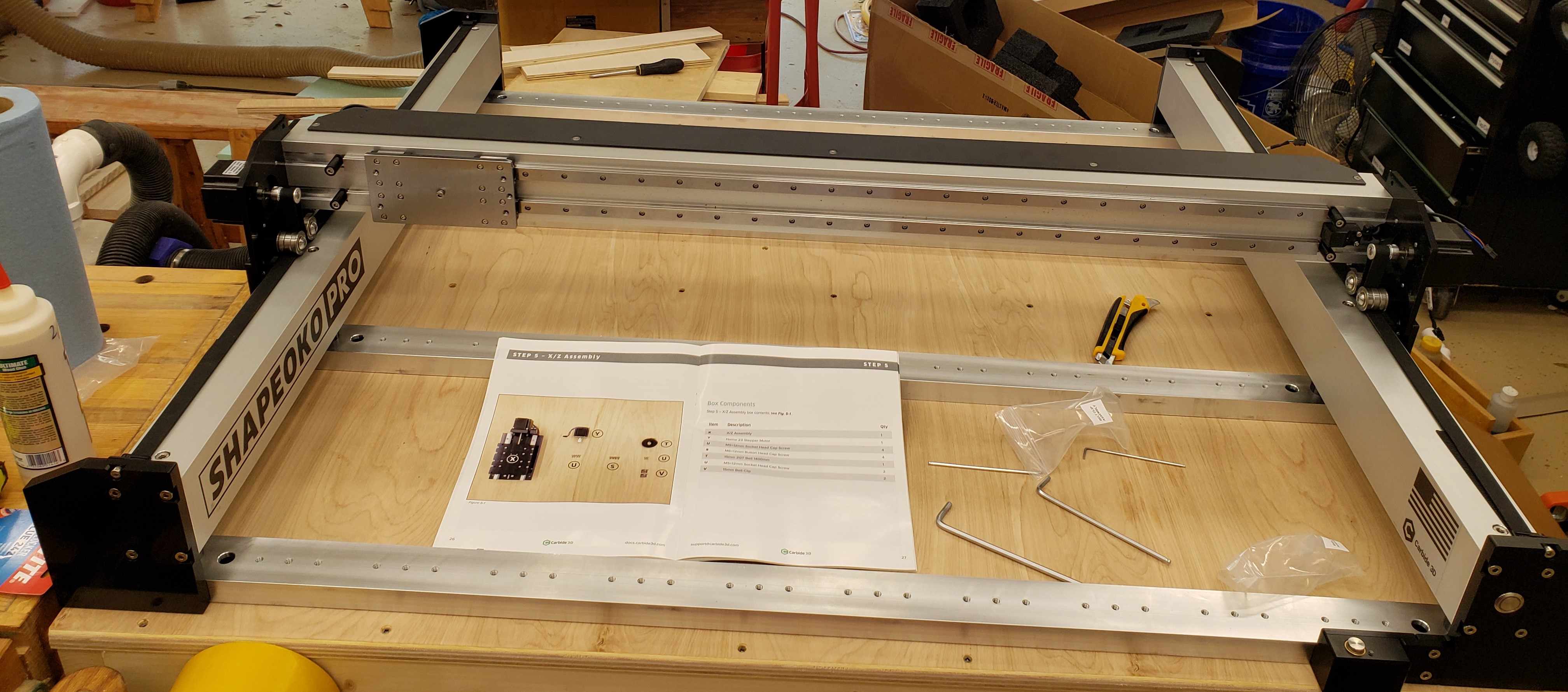
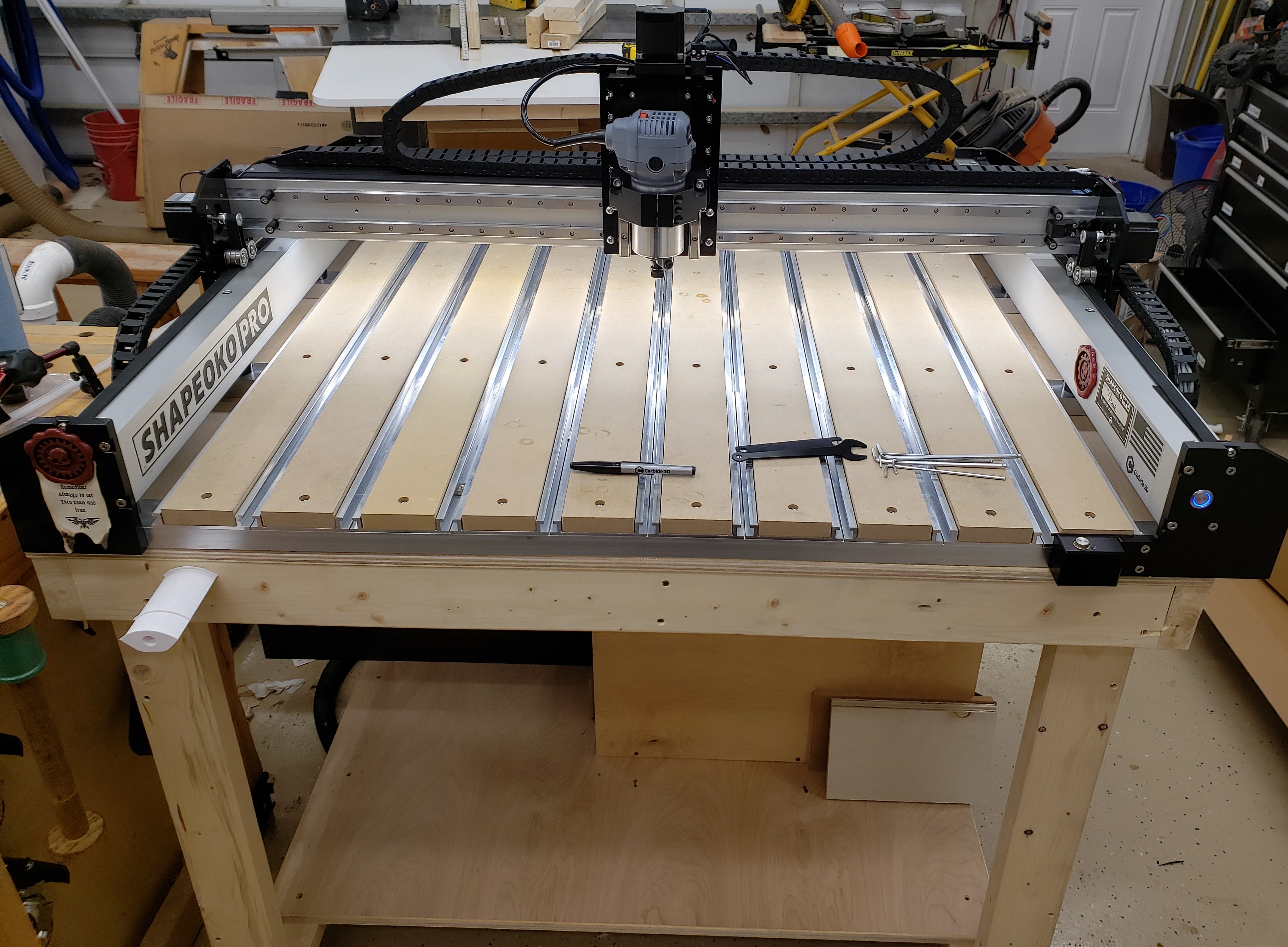
I added a set of double LED strips under the X rail to help light up my projects. I expect a home made Z-touch probe and different dust collection solutions is in my near future. Regardless I got it all setup and blessed by the tech priests of the adeptus mechanicus. A coworker got me reading warhammer 40k, so I had to do some crafting for myself and him as a gift.
I got the new control board installed today and couldn’t help but start by measuring the stage accuracy, table flatness, and XY squareness. All of the numbers have been fantastic. I just have to check the spindle tram, then we are off to the races. I did try some test cuts in MDF. It was flying like a hot knife through butter.

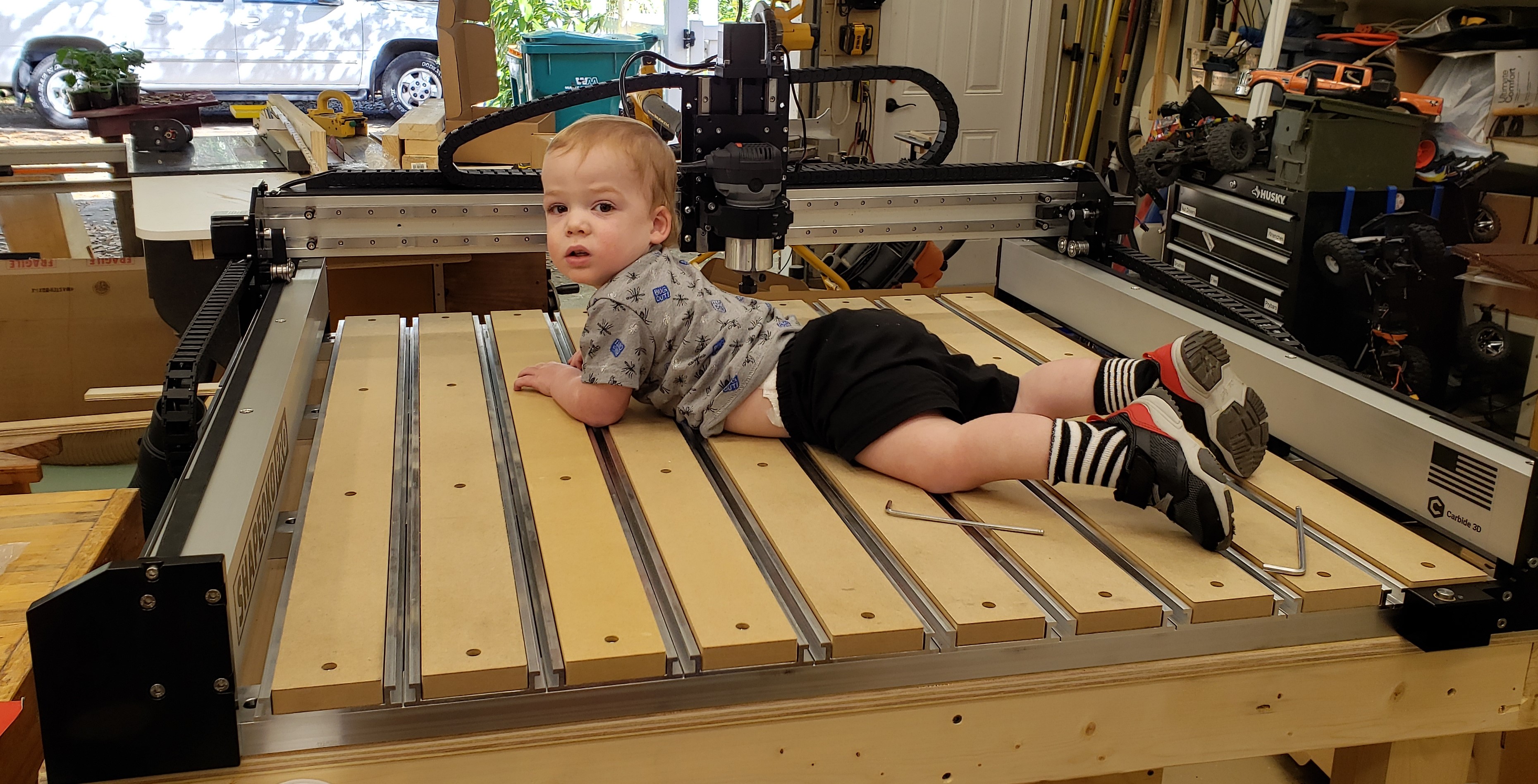
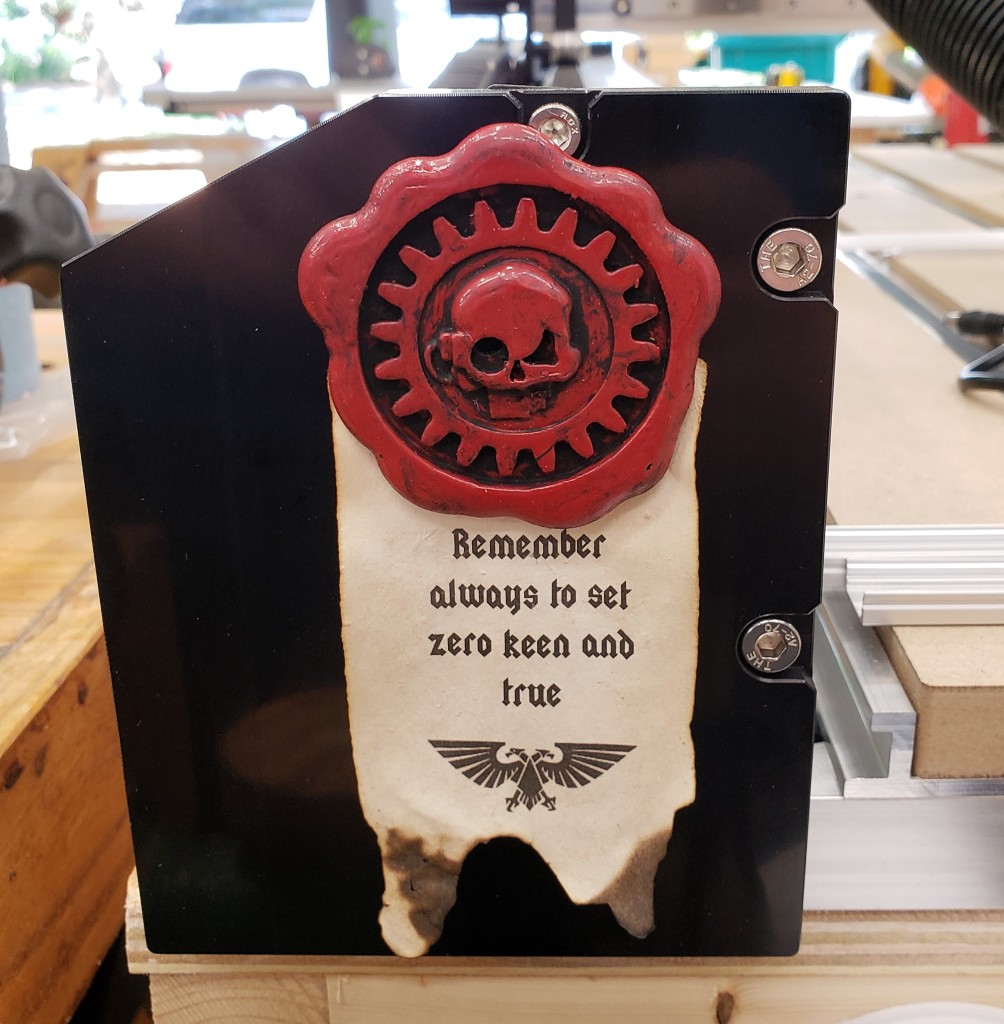
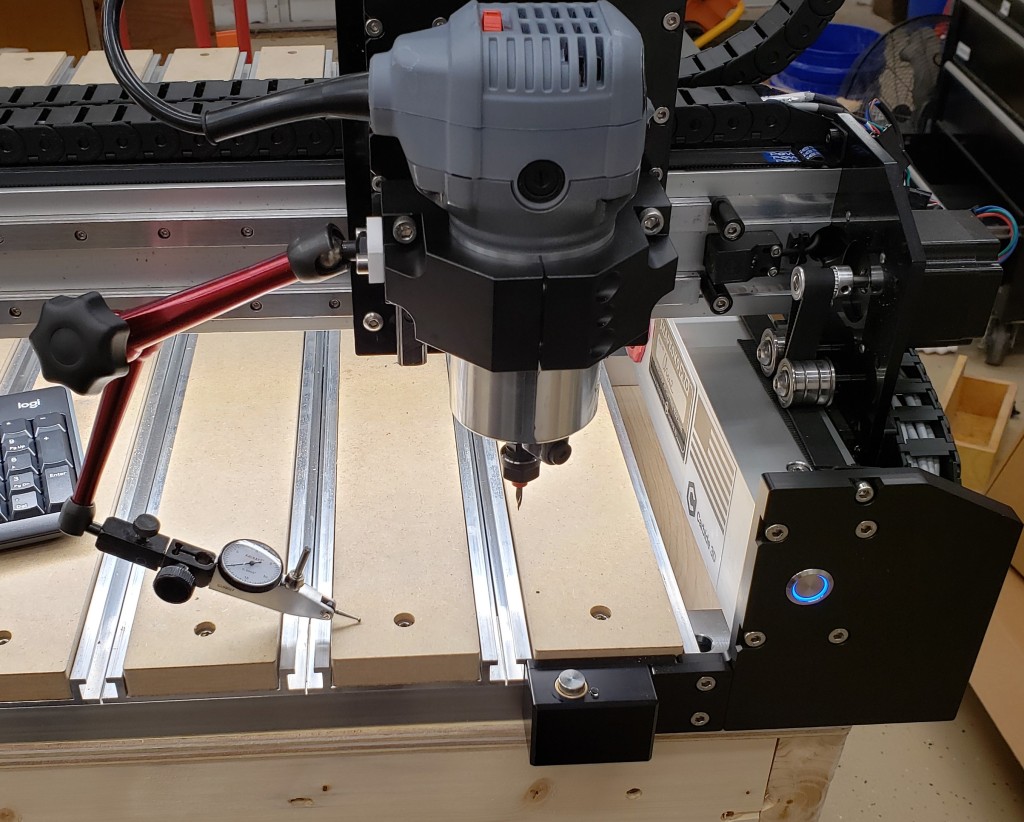
























 This project took only 3 2x4s, a bit of glue, and a hand full of screws. I started by cutting up a pile of 3.5″ long 2×4 segments. These are going to go together like a end grain cutting board.
This project took only 3 2x4s, a bit of glue, and a hand full of screws. I started by cutting up a pile of 3.5″ long 2×4 segments. These are going to go together like a end grain cutting board.

 With everything glued I had a big block target. This alone would probably last a while, but could somewhat easily cleave in half along the grains. To help with strength I wrapped the edges with 2x4s screwed into the core. This will help hold the relatively delicate center together longer.
With everything glued I had a big block target. This alone would probably last a while, but could somewhat easily cleave in half along the grains. To help with strength I wrapped the edges with 2x4s screwed into the core. This will help hold the relatively delicate center together longer.








